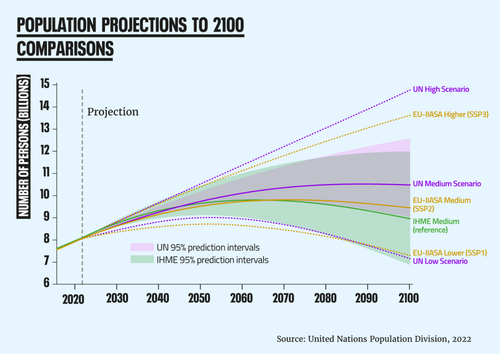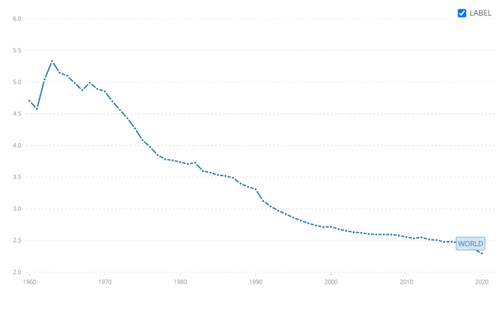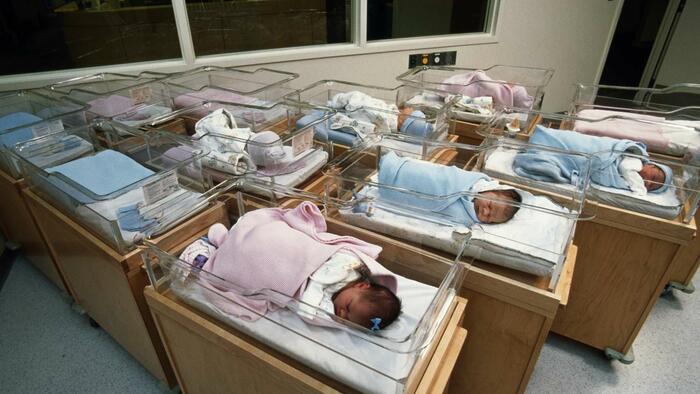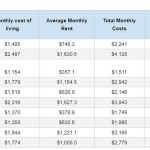Authored by Bill King via RealClearPolitics.com,
I regularly talk to well-informed people who do not realize that world population growth is rapidly decelerating.
Currently, the UN estimates the most likely case is that the world’s population will top out around 10 billion in 2080 and then begin a long, slow decline. Other modelers are projecting the peak will be reached in 2060 at 9 billion and then decline more rapidly. Some scenarios predict there will be fewer people on the planet at the end of century than there are now.

UN Population Division
The United Nation’s predictions for the U.S. are similar, with our population topping out at around 380 million near the end of the century. This is consistent with the Congressional Budget Office projections, which assume the U.S. annual population growth rate over the next 20 years will decline from 0.5% to 0.2%. Without immigration, the U.S. population would begin to decline around 2035.

Congressional Budget Office
Many of us grew up reading Paul Ehrlich’s runaway best-seller “The Population Bomb,”, which predicted a worldwide apocalypse was just around the corner. The book, written in 1968, categorically predicted that “The battle to feed all of humanity is over. In the 1970s hundreds of millions of people will starve to death.” Of course, that did not happen and since around 2000, researchers have found there have been more obese people in the world than those who are undernourished.
In part, it did not happen because of an explosion of agricultural technology in the 1950s and 1960s known as the Green Revolution. But Ehrlich’s prediction also never came to pass because he missed that at the time of their book, women had already begun having fewer babies.
The critical metric for population growth is the average number of children women are having at any particular time, known as the fertility rate. Other factors, such as childhood survival and longevity, also affect population growth, but the fertility rate is the big driver. It takes a fertility rate of 2.1 children per woman to maintain a stable population, known as the “replacement rate.” Anything above that and the population will grow and below that it falls.
When ”The Population Bomb” was published, the fertility rate was stunningly high at 5. That astronomical rate would go on to cause the world population to double just 40 years later. But what was not apparent to the author at the time was that the fertility rate had peaked about five years earlier at 5.3. That began a steady slide downward to 2.3 today, just barely above the replacement rate.

World Bank
However, a decline in the fertility rate does not show up at once. It takes a while for that lower rate to work through the generational cycle, something referred as “population momentum.” That is why you still see a hefty 25% increase in the world’s population in the projections before it tops out in 2080.
Many countries around the world are already beginning to feel the effects of slowing population growth. Japan and Russia both face looming drastic population declines. China announced this year that for the first time its population had declined. Some countries have adopted policies to encourage young couples to have more children.
Of course, there is no question that the decline in population growth is very welcome news. Without the downturn we would be facing the apocalypse that Ehrlich foresaw as we put ever-increasing demands on the earth’s finite resources.
But our civilization has been based on steady population growth and astronomical population since the mid-20th century. Programs such as Social Security and Medicare will not work in a world where the population is flat or declining, at least not without some substantial modification. Because lower fertility rates are correlated with educational attainment, the most uneducated, poorest parts of the world will be growing the fastest. The only places in the world currently with a fertility rate well above the replacement rate are Africa and central Asia. This dichotomy will result in greater wealth disparity and conflicts.

PRB Data Center, Total Fertility Rate by Subregion, https://www.prb.org/international/indicator/fertility/snapshot. Reproduced by permission.
The new population paradigm will cause many headaches which our children and grandchildren will have to wrestle. Some are obvious and some probably unforeseeable. It would be great if the world could start thinking through those issues now and begin to prepare. However, human behavior over the centuries has shown that kind of long-term planning is not one of our strong suits.
Loading…












